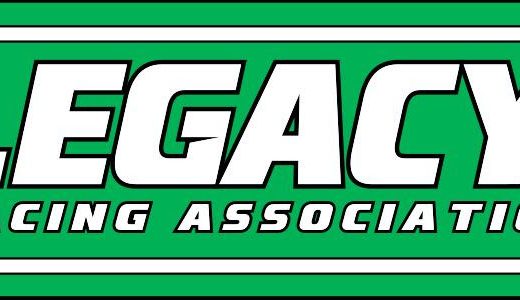By Brian Hawthorne, BlueRibbon Coalition
Jon Tester, a U.S. Senator from Montana, is holding meetings on legislation he calls the “Forest Jobs and Recreation Act.” It’s a Wilderness bill dressed up as a compromise between preservation, forest health and recreation. The stated purpose of which is:
To sustain the economic development and recreational use of National Forest System land and other public land in the State of Montana, to add certain land to the National Wilderness Preservation System, to release certain wilderness study areas, to designate new areas for recreation, and for other purposes.
That’s a fine statement, and I really like the title of the bill. But after careful review of the current draft, I can’t see that it does much more than designate a bunch of new Wilderness. It certainly doesn’t designate any “new areas for recreation.”
What this bill does do, however, is demonstrate just how utterly broken federal land management is these days. As an object lesson, or a demonstration project, I think Tester has created a masterpiece.
Here’s why: the jobs in Tester’s jobs bill do NOT hinge on the legislation actually opening up lands that are otherwise closed today for logging. Although maps and other “PR” try to make it seem otherwise, the legislation is very clear on this point. Any logging or forest health jobs resulting from this bill are already permitted today, either via an existing Forest Plan or via legislation already passed into law.
The essence of Tester’s bill is an attempt to force the Forest Service to follow through with existing plans that allow logging, and also attempts to limit environmental groups’ ability to challenge them.
It is no longer a joke to say it takes an act of Congress to cut timber in Montana.
I don’t know if I could have created a better example of how gridlocked the agency is in management, or how these “environmental” groups sue at the drop of a hat. That it requires legislation to log a paltry 70 thousand acres over 10 years is a sad indication of how broken our system of public lands management is.
To make matters worse, its not clear the bill will succeed even if passed. Fred Hodgeboom, President, Montanan’s for Multiple Use, and former Forest Service Planning Forester, doesn’t think the legislation will result in much timber cut. Hodgeboom said; “Timber harvest targets authorized by the existing Forest Plan have been blocked by endless appeals and litigation. As the Bill is written, agency gridlock and environmental lawsuits will prevail in attempts to implement the timber targets proposed in Tester’s bill.”
In the meantime, the Forests, after years of non-management (what I call benign neglect) are growing even more susceptible to “fatal” wildfires, disease and insect devastation. What a mess.
What About Recreation?
Far from designating “new” recreation areas, or even sustaining recreational uses at existing levels, this bill eliminates a lot of existing recreation opportunity.
Most of the lands in Tester’s bill are on the Beaverhead-Deerlodge National Forest (B-DNF), and the bill essentially establishes in law what the new Forest Plan dictates. Sadly, the new plans dictate that many prized snowmobile areas and OHV routes be closed.
That’s why the Forest Plan is being appealed by numerous stakeholders, including local governments and recreation groups. Should the administrative appeals be denied (likely), some are planning to challenge the new plans in federal court. If Tester’s bill passes, that won’t be possible.
In an apparent sop to the over 28% of Montana residents who enjoy OHV and snowmobile use, Tester is going to establish several National Recreation Areas (NRA) where motorized and mountain bike recreation will be, um, ’emphasized.’
The draft bill contains very specific language on where OHVs and snowmobiles are allowed in these areas. Unfortunately, the language is impossible to decipher. Either that, or the language has been specifically designed to eliminate our use.
The bill establishes three NRAs within the B-DNF. In the West Big Hole NRA, motors are allowed only on “approved, designated routes.” In the West Pioneers NRA, motors are allowed only on “approved, designated trails and routes in existence as of the date of enactment of this Act.” In the Thunderbolt Creek NRA, motors are allowed on “established trails and routes existing as of the date of enactment of this Act.”
Now, the different language for the different NRAs is confusing enough, but the B-DNF has not yet completed its travel plan, and until it does, very few routes can be accurately described as approved OR designated, let alone approved AND designated. And as far as I’m aware, there is no regulatory definition of “established routes.”
As written, it is simply impossible to tell what the bill will do with the existing routes in the NRAs. OHV users have met with Tester’s staff and have been assured it’s not the Senator’s intent to eliminate OHV use, and they are open to changes in the bill. Let’s hope they are open to correcting obvious errors.
What is really interesting is what the bill says about mountain bikes. While the bill at least seems specific on motors, it simply states, “The use of mechanized, non-motorized vehicles shall be permitted.” I guess I’ll have to be the one to ask: Permitted where, exactly? Are mountain bikes allowed to go anywhere they want? Or just on existing trails? Designated trails?
Some of our mountain bikers might think that sort of vague language is a good thing, and it certainly seems better than the motorized verbiage. But I don’t trust it. Sooner or later, someone is going to define that vague language. And if that someone ends up being a federal judge, well, let’s just say that if I was the head of the mountain biker group in Montana, I’d be meeting with Tester to nail our trails down in concrete.
What about the Wilderness?
The bill designates approximately 677,000 acres of Wilderness, but it releases 76,000 acres of Wilderness Study Area into “multiple use management.” I guess we’re supposed to be really happy about that. But something in the back of my head tells me we’ll never see much in the way of OHV or snowmobile recreation there. I hope I’m wrong.
I can’t refrain from making a comment about how Tester’s bill treats Wilderness. In the Proposed East Pioneers Wilderness, for example, Tester makes certain that “motorized use over and along roads and trails in existence as of the date of enactment of this Act” is allowed for maintenance of several water impoundment structures (reservoirs). The bill also allows motorized use within Wilderness to maintain various pipelines and communication sites.
Say what?? Roads? Reservoirs? Pipelines? Communication sites? In Wilderness? This can’t be. I mean, Congress prohibited such things when they passed the original 1964 Wilderness Act, didn’t they?
Again, this bill is an excellent object lesson on just how broken our system of public lands has become. The Wilderness Act does not even remotely contemplate any of this occurring in Wilderness. But then again, the Wilderness Act never contemplated Wilderness in areas crisscrossed with roads, pipelines and communication sites. What a mess.
Back to the drawing board.
Any legislation that purports to be a compromise must include benefits for all parties. This bill is far from a true compromise because it rewards Wilderness groups for being litigious and punishes average forest visitors with closures. It absolutely guarantees the Wilderness will be established the very second it’s signed into law, but provides few guarantees that those 70 thousand acres will be cut or that trails will be left open.
This is Tester’s first stab at a land bill, so I’m going to cut him some slack. But he needs to go back to the drawing board. Until he does, this bill should be considered a non-starter.
I strongly encourage the Senator to work with recreational groups to find those mutual benefits. If it is his intent to protect OHV and snowmobile recreation in certain areas, then his legislation should say so. Clearly and unambiguously. We support National Recreation Areas, and we applaud Tester for considering this option. But the legislation should protect existing OHV, mountain bike and snowmobile recreation. There may be some areas suitable for Wilderness, but boundaries should be carefully re-drawn to leave out existing recreation destinations. And I think he would be wise to use his legislation as a way to address problems local communities have with these new forest plans, as opposed to “sealing the deal” on what the agency cooked up.
Senator Tester is taking public input on his bill, and we encourage you to make your views known, but not just to the Senator. Start at the county and work your way up. You can find contact numbers, as well as updates and other info, on our new dedicated webpage for Tester’s bill. It’s all on www.sharetrails.org/public_lands – your best online resource for recreational access.
Links:
About the BlueRibbon Coalition:
The BlueRibbon Coalition is a national non-profit organization dedicated to preserving responsible recreational access to public lands and waters. We want to keep your land open for use, whether you recreate on a mountain bike, snowmobile, motorcycle, personal watercraft, ATV, four-wheeler, horse, or your hiking boots.
Check out their website at: www.sharetrails.org.



No Comments